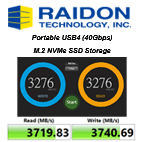R&D: DNA as Universal Chemical Substrate for Computing and Storage
Provides insights into how DNA computing can be integrated with DNA storage and explores use of DNA for near-memory computing for future information technology and health analysis applications.
This is a Press Release edited by StorageNewsletter.com on April 29, 2024 at 2:01 pmNature Reviews Chemistry has published an article written by Shuo Yang, State Key Laboratory of Metal Matrix Composites, School of Materials Science and Engineering, Shanghai Jiao Tong University, Shanghai, China, and Zhangjiang Institute for Advanced Study (ZIAS), Shanghai Jiao Tong University, Shanghai, China, Bas W. A. Bögels, Laboratory of Chemical Biology, Department of Biomedical Engineering, Eindhoven University of Technology, Eindhoven, The Netherlands, Institute for Complex Molecular Systems (ICMS), Eindhoven University of Technology, Eindhoven, The Netherlands, and Computational Biology Group, Department of Biomedical Engineering, Eindhoven University of Technology, Eindhoven, The Netherlands, Fei Wang, School of Chemistry and Chemical Engineering, New Cornerstone Science Laboratory, Frontiers Science Center for Transformative Molecules and National Center for Translational Medicine, Shanghai Jiao Tong University, Shanghai, China, Can Xu, State Key Laboratory of Metal Matrix Composites, School of Materials Science and Engineering, Shanghai Jiao Tong University, Shanghai, China, and Zhangjiang Institute for Advanced Study (ZIAS), Shanghai Jiao Tong University, Shanghai, China, Hongjing Dou, State Key Laboratory of Metal Matrix Composites, School of Materials Science and Engineering, Shanghai Jiao Tong University, Shanghai, China, and Zhangjiang Institute for Advanced Study (ZIAS), Shanghai Jiao Tong University, Shanghai, China, Stephen Mann, State Key Laboratory of Metal Matrix Composites, School of Materials Science and Engineering, Shanghai Jiao Tong University, Shanghai, China, Zhangjiang Institute for Advanced Study (ZIAS), Shanghai Jiao Tong University, Shanghai, China, Centre for Protolife Research and Centre for Organized Matter Chemistry, School of Chemistry, University of Bristol, Bristol, UK, and Max Planck-Bristol Centre for Minimal Biology, School of Chemistry, University of Bristol, Bristol, UK, Chunhai Fan, School of Chemistry and Chemical Engineering, New Cornerstone Science Laboratory, Frontiers Science Center for Transformative Molecules and National Center for Translational Medicine, Shanghai Jiao Tong University, Shanghai, China, and Institute of Molecular Medicine, Shanghai Key Laboratory for Nucleic Acids Chemistry and Nanomedicine, Renji Hospital, School of Medicine, Shanghai Jiao Tong University, Shanghai, China,Tom F. A. de Greef, Laboratory of Chemical Biology, Department of Biomedical Engineering, Eindhoven University of Technology, Eindhoven, The Netherlands, Institute for Complex Molecular Systems (ICMS), Eindhoven University of Technology, Eindhoven, The Netherlands, Computational Biology Group, Department of Biomedical Engineering, Eindhoven University of Technology, Eindhoven, The Netherlands, Institute for Molecules and Materials, Radboud University, Nijmegen, The Netherlands, and Center for Living Technologies, Eindhoven–Wageningen–Utrecht Alliance, Utrecht, The Netherlands.
Abstract: “DNA computing and DNA data storage are emerging fields that are unlocking new possibilities in information technology and diagnostics. These approaches use DNA molecules as a computing substrate or a storage medium, offering nanoscale compactness and operation in unconventional media (including aqueous solutions, water-in-oil microemulsions and self-assembled membranized compartments) for applications beyond traditional silicon-based computing systems. To build a functional DNA computer that can process and store molecular information necessitates the continued development of strategies for computing and data storage, as well as bridging the gap between these fields. In this Review, we explore how DNA can be leveraged in the context of DNA computing with a focus on neural networks and compartmentalized DNA circuits. We also discuss emerging approaches to the storage of data in DNA and associated topics such as the writing, reading, retrieval and post-synthesis editing of DNA-encoded data. Finally, we provide insights into how DNA computing can be integrated with DNA data storage and explore the use of DNA for near-memory computing for future information technology and health analysis applications.“















 Subscribe to our free daily newsletter
Subscribe to our free daily newsletter

